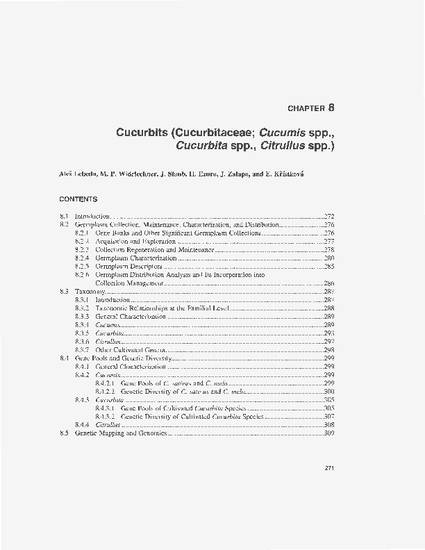
Contribution to Book
Cucurbits (Cucurbitaceae; Cucumis spp., Cucurbita spp., Citrullus spp.)
Genetic Resources, Chromosome Engineering, and Crop Improvement: Vegetable Crops
Document Type
Book Chapter
Disciplines
Publication Version
Published Version
Publication Date
1-1-2007
Abstract
The Cucurbitaceae is a remarkable plant family, deserving of attention because of its economic, aesthetic, cultural, medicinal, and botanical significance. In the Old and New Worlds, cucurbits have been associated with human nutrition and culture for more than 12,000 years (Brothwell and Brothwell 1969; Lira-Saade 1995). Thus, the Cucurbitaceae, along with the Brassicaceae and Asteraceae, can be considered families of extraordinary importance to humans, and they follow cereals and legumes in their economic significance to human economy (Whitaker and Davis 1962; Nayar and More 1998).
Rights
Works produced by employees of the U.S. Government as part of their official duties are not copyrighted within the U.S. The content of this document is not copyrighted.
Language
en
File Format
application/pdf
Citation Information
Ales Lebeda, M. P. Widrlechner, J. Staub, H. Ezura, et al.. "Cucurbits (Cucurbitaceae; Cucumis spp., Cucurbita spp., Citrullus spp.)" Genetic Resources, Chromosome Engineering, and Crop Improvement: Vegetable Crops Vol. 3 (2007) p. 271 - 376 Available at: http://works.bepress.com/mark_widrlechner/123/

This is a chapter from Genetic Resources, Chromosome Engineering, and Crop Improvement: Vegetable Crops 3 (2007): 271.